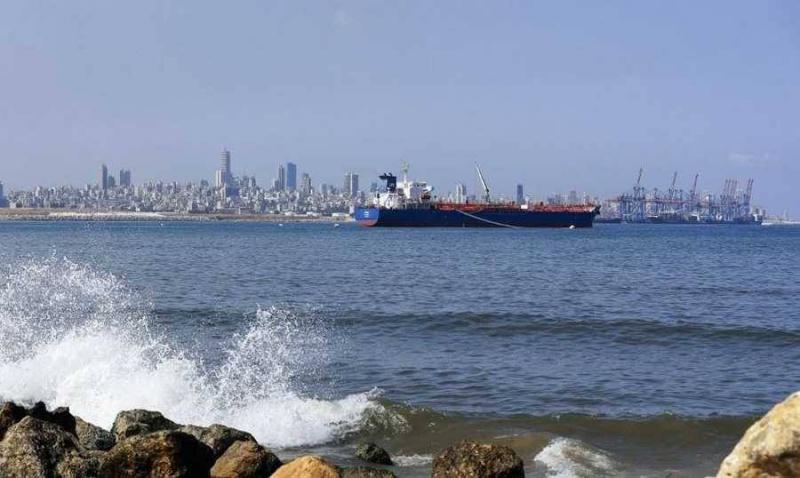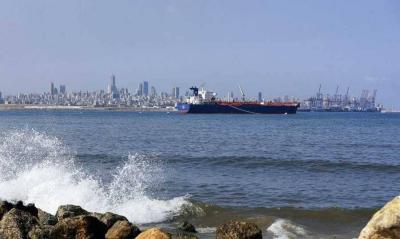The Lebanese government continues to study the verbal proposal brought by the U.S. mediator in the maritime border delineation file, Amos Hochstein. Discussions are ongoing following the meeting of the political-military-technical committee at Baabda Palace last Tuesday. As is now known, the "proposed line," based on the coordinates of the Israeli "Line 1," asks Lebanon to agree to a "buffer security zone" between point 31—which marks the beginning of Line 1 (the buoy line)—and the "Ras al-Naqura" point, extending approximately 6 km deep, and placing this area under the control of UNIFIL, in exchange for granting Lebanon full access to the potential "Kana Field." It should be noted that the "new line" may require adjustments to points that could affect the future demarcation of land borders. The U.S. mediator has provided "the buoy line coordinate lists," postponing the written proposal until after a response to the "coordinate paper."
The "coordinate paper" was forwarded to the "technical committee," which had been formed to study the proposal, and was assigned to issue recommendations. The committee convened at Baabda Palace last Tuesday, attended by Deputy Speaker Elias Bou Saab, General Director of General Security Major General Abbas Ibrahim, advisors to the President and Speaker of Parliament, and a technical-military delegation representing the army led by Major Afif Ghaith. What has been leaked from the meeting suggests that the coordinates provided for the "buoy line" do not match its current position, revealing discrepancies. This was interpreted as a result of tidal movements affecting the buoy positions, suggesting these discrepancies could be resolved compared to the fundamental issue concerning what the adversary seeks. Notably, altering the starting point of the line would facilitate the creation of a "buffer zone."
In practical terms, the committee was informed of the risks stemming from changing the line's starting point, including replacing Ras al-Naqura, which represents a legal precedent that could diminish Lebanon’s leverage and influence in future demarcations. This raised questions that led Lebanon to hesitate in swiftly agreeing to Hochstein's requests. A compromise was proposed wherein the "buoy line" would be linked to the Ras al-Naqura point rather than resorting to point 31, which marks the beginning of the Israeli Line 1.
Sources following the matter indicated to "Al-Akhbar" that "significant complications have arisen in the negotiations technically, which could lead to a freeze," in light of the expected Lebanese rejection of the foundations adopted for delineating the new "Hochstein Line" and the reasons behind it, as well as the opposition to moving point B1 north, which would remove the strategic influence of Ras al-Naqura in any future land delineation. Conversely, the adversary will reject Lebanon’s request to adopt "Ras al-Naqura" as the starting point for delineation and will refuse the "buffer zone," emphasizing the demand to receive a "price" that justifies what they call a "safe area" to secure their borders.
Why does the adversary insist on a "safe area"? B1, which is designated as the penultimate point in the land demarcation according to the 1923 Pully-Nou Camp agreement and reaffirmed in the 1949 armistice agreement, is a strategically important point. In addition to its impact on the course of land boundary delineation, it possesses an elevation like a "hill" overlooking the Israeli "Rosh Hanikra" coast and the "Kfar Rosh Hanikra" settlement (the Palestinian village of al-Bassa) and its surrounding agricultural lands, providing a comfortable viewpoint from which the adversary fears military and security implications should it be decided to install technical observation towers above it.
Moreover, beyond its significance in boundary delineation, linking the buoy line at the last "buoy" to line 23 moving south creates a region beneficial to the Israeli side by obscuring visibility over the entirety of the Akka Bay, where the "Karish" field and other undiscovered fields lie, eliminating the characteristic "direct fire line" that affects the entire tourist coast of Akka from B1. This also ensures the safety of Akka's coastal strip and navigation within its bay. The marine area opposite Ras al-Naqura, at the bend of line 23, constitutes a water area of 2.5 square kilometers, offering unobstructed visibility to the Palestinian coast extending to the "Nahariya" settlement.




